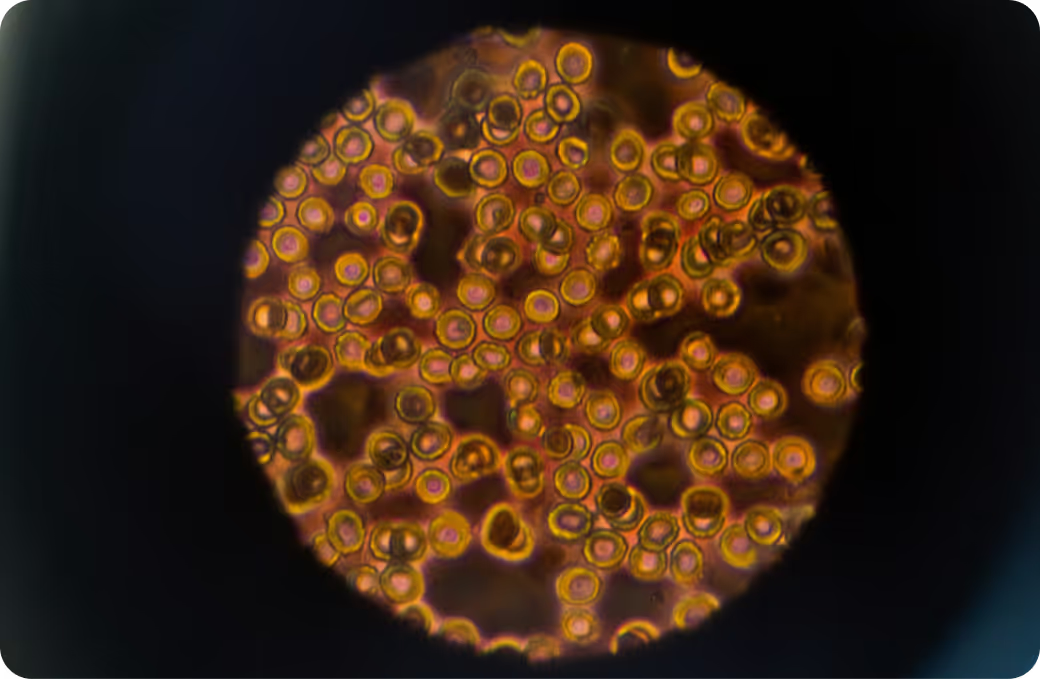Key Insights
- See your current exposure to benzene by measuring its sensitive urine metabolite, N‑acetyl‑S‑phenyl‑L‑cysteine (often called NAP or SPMA), and how your level compares with typical background exposure.
- Identify meaningful exposure patterns and potential sources (e.g., gasoline fumes at the pump, vehicle exhaust, tobacco smoke, solvents, an attached garage, or workplace air).
- Clarify whether benzene exposure could be contributing to system stress relevant to blood formation, immune balance, or liver detoxification pathways.
- Support reproductive planning or pregnancy safety by checking for elevations during sensitive life stages when minimizing volatile organic compound exposure is especially important.
- Track trends over time after changing products, improving ventilation, or modifying occupational or commuting environments.
- Inform conversations with your clinician about whether additional evaluations, workplace controls, or targeted exposure‑reduction strategies are warranted.
What is N‑Acetyl Phenyl Cysteine (NAP)?
N‑Acetyl Phenyl Cysteine (NAP) — more precisely N‑acetyl‑S‑phenyl‑L‑cysteine, also known as S‑phenylmercapturic acid or SPMA — is the major urinary “mercapturic acid” metabolite of benzene, a volatile aromatic hydrocarbon found in gasoline and vehicle exhaust, industrial emissions, cigarette smoke, and some solvent mixtures. You typically encounter benzene through inhalation (fueling a car, traffic, poorly ventilated garages or workshops), with smaller contributions from dermal contact and, less commonly, ingestion. Laboratories measure NAP in urine, often normalized to creatinine to account for hydration. Because NAP clears relatively quickly, it reflects recent exposure over roughly the last day or two rather than long‑term body burden.
Why it matters: benzene is metabolized in the liver to reactive intermediates that can bind to cellular components. One detoxification route couples benzene metabolites to glutathione, then to cysteine, and finally acetylates them to form NAP for renal excretion. NAP therefore serves as a sensitive lens on your body’s handling of benzene exposure. Health research links sustained or high benzene exposure to effects on bone marrow and blood cell formation, with potential immune and oxidative stress pathways involved. Most people carry low background exposure; the goal is to spot when levels trend beyond that context, without alarmism and with attention to real‑world patterns.
Why Is It Important to Test For N‑Acetyl Phenyl Cysteine (NAP)?
Testing NAP connects a familiar scenario — the whiff of gasoline during a fill‑up or time spent in heavy traffic — to a measurable signal in your biology. Because NAP rises with benzene uptake and falls as your kidneys clear it, a urine measurement can distinguish incidental contact from sustained exposure. That matters for people who work around fuels or combustion (mechanics, refinery workers, firefighters, lab and printing settings) and for anyone troubleshooting household contributors like an attached garage, solvent use in hobbies, or secondhand smoke. Measured levels can help make sense of exposure‑related questions, such as whether recurring end‑of‑day headaches line up with commuting patterns, or whether workplace ventilation is adequate. Testing is especially informative during pregnancy planning and in early childhood, when minimizing volatile organic compounds is advisable as a precautionary principle, though individual results always need clinical context.
Big picture, NAP fits into a broader environmental health mosaic. A single value is a snapshot; trends across time, plus what you know about your routines, give the most reliable signal. When NAP is considered alongside other environmental markers, general health labs (complete blood count, liver and kidney function), and symptoms, it helps separate transient spikes from persistent exposure patterns. That context allows for smarter, safer decisions with your clinician — not just about this one toxin, but about your overall environment and long‑term risk profile.
What Insights Will I Get From an N‑Acetyl Phenyl Cysteine (NAP) Test?
Labs typically report urinary NAP with a population‑based reference interval and often adjust for creatinine so hydration doesn’t overly sway results. For environmental toxins, lower values are generally preferable when feasible. Because NAP reflects recent exposure, interpretation benefits from noting timing (e.g., a sample collected soon after a long drive or fuel stop) and, when needed, repeating the test to map your personal baseline and variability.
Relatively lower values usually indicate limited recent benzene exposure and a lower likelihood of short‑term system stress from this pathway. In non‑smokers with good ventilation and minimal contact with fuels or solvents, values often sit near the low end of population data. During pregnancy and early childhood, lower levels are particularly reassuring, given the emphasis on minimizing volatile organic compounds during sensitive development windows.
Relatively higher values can signal recent or ongoing benzene exposure. That may reflect a specific event (prolonged fueling, time in heavy traffic, use of solvent‑rich products) or a more chronic source like an attached garage, indoor smoking, or occupational air. When elevated, the body systems doing the most work are the liver (metabolism and conjugation), the kidneys (excretion), and, at higher sustained exposures, the hematopoietic and immune systems. Some people form NAP more or less efficiently based on enzyme activity in glutathione‑conjugation and acetylation pathways, so individual metabolism can influence measured levels. Confirming patterns with repeat testing and real‑life context is more reliable than drawing conclusions from a single result.
Ultimately, NAP results are most meaningful when viewed alongside related biomarkers (for example, other volatile organic compound metabolites), core health indicators, and your daily context. Over weeks to months, that combination separates transient spikes from persistent exposure, informs whether workplace controls or home ventilation are effective, and supports informed, collaborative decisions with your clinician. As a practical note, this test measures a benzene metabolite; it is not the same as the dietary supplement N‑acetylcysteine. While research continues to refine exposure thresholds and susceptibility factors, using NAP to anchor the conversation turns a vague environmental concern into clear, actionable insight.







.avif)



.svg)





.svg)


.svg)


.svg)

.avif)
.svg)










.avif)
.avif)
.avif)


.avif)
.avif)




.svg)


